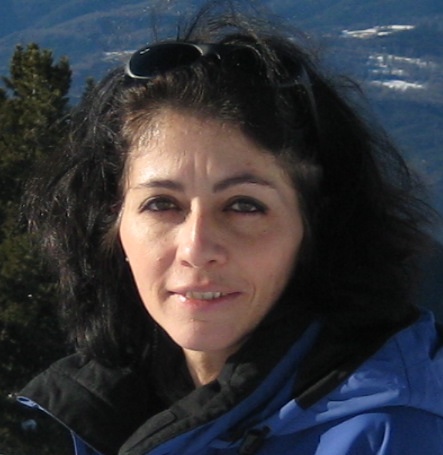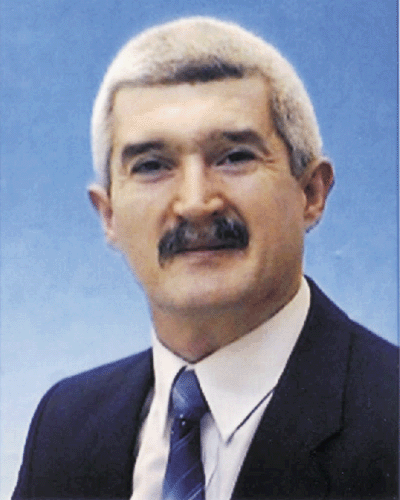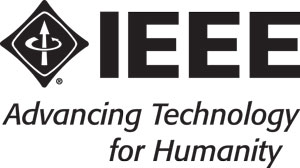Energy efficient networking has become an hot topic in the last few years. In this tutorial, I will first motivate the interest and importance of this topic by presenting some data about energy consumption of network devices. Data will allow to identify the network segments that are the most energy hungry. The main approaches proposed in the literature for reducing network energy consumption will then be presented with particular attention to wireless networks. Finally, we will shift our attention from energy efficient networking to the new challenging topic of sustainable networking.
 |
Michela Meo received the Laurea degree in Electronics Engineering in 1993, and the Ph.D. degree in Electronic and Telecommunications Engineering in 1997, both from the Politecnico di Torino, Italy. Since November 1999, she is an Associate Professor at Politecnico di Torino. She co-authored more than 150 papers and edited six special issues of international journals. Her research interests are in the field of green networking, performance evaluation and modeling, traffic classification and characterization, P2P. |
Emerging Internet Quality of Service (QoS) mechanisms are expected to enable wide spread use of real time services such as VoIP and videoconferencing. The "best effort" Internet delivery cannot be used for the new multimedia applications. New technologies and new standards are necessary to offer Quality of Service (QoS) for these multimedia applications. Therefore new communication architectures integrate mechanisms allowing guaranteed QoS services as well as high rate communications. The service level agreement with a mobile Internet user is hard to satisfy, since there may not be enough resources available in some parts of the network the mobile user is moving into. The emerging Internet QoS architectures, differentiated services and integrated services, do not consider user mobility. QoS mechanisms enforce a differentiated sharing of bandwidth among services and users. Thus, there must be mechanisms available to identify traffic flows with different QoS parameters, and to make it possible to charge the users based on requested quality. The integration of fixed and mobile wireless access into IP networks presents a cost effective and efficient way to provide seamless end-to-end connectivity and ubiquitous access in a market where the demand for mobile Internet services has grown rapidly and predicted to generate billions of dollars in revenue. This tutorial covers to the issues of QoS provisioning in heterogeneous networks and Internet access over future wireless networks as well as ATM, MPLS, DiffServ, IntServ frameworks. It discusses the characteristics of the Internet, mobility and QoS provisioning in wireless and mobile IP networks. This tutorial also covers routing, security, baseline architecture of the inter-networking protocols and end to end traffic management issues.
 |
Pascal LORENZ (lorenz@ieee.org) received his M.Sc. (1990) and Ph.D. (1994) from the University of Nancy, France. Between 1990 and 1995 he was a research engineer at WorldFIP Europe and at Alcatel-Alsthom. He is a professor at the University of Haute-Alsace, France, since 1995. His research interests include QoS, wireless networks and high-speed networks .He is the author/co-author of 3 books, 2 patents and 200 international publications in refereed journals and conferences. He was Technical Editor of the IEEE Communications Magazine Editorial Board (2000- 2006), Chair of Vertical Issues in Communication |
| Systems Technical Committee Cluster (2008-2009) and Modeling Technical Committee (2003-2009) and Chair of the Communications Software Technical Committee (2008-2010). He has been Co-Program Chair of ICC'04 and symposium Co-Chair at Globecom 2009-2007 and ICC 2009-2008. He has served as Co-Guest Editor for special issues of IEEE Communications Magazine, Networks Magazine, Wireless Communications Magazine, Telecommunications Systems and LNCS. He is senior member of the IEEE and member of many international program committees. He has organized many conferences, chaired several technical sessions and gave tutorials at major international conferences. | |
For the tutorial abstract click here.
 |
Friedrich Szoncso - C.V. |
The tutorial starts with some general aspects of modeling in EMC. The introductory part deals with some commonly used analytical and numerical methods, respectively. The participants will then be given a crash-course on the theory of wire antennas and related numerical methods for the solution integral equations in both frequency and time domain. Applications pertaining related to dipoles, Yagi-Uda arrays and logarithmic-periodic dipole antennas (LPDA) will be discussed. Furthermore, full wave (antenna) models for various thin wire structures, from rather simple to realistic complex geometries, will be presented. This will be followed by the analysis of overhead and buried lines, respectively, which will be carried out using both rigorous full wave models and approximate transmission line (TL) approach. Particular attention will be focused to the analysis of PLC (Power Line Communications) configurations and modeling of lightning channel. Then, the transient analysis of realistic grounding systems with particular emphasis to wind turbines will be undertaken. The tutorial ends up with human exposure to non-ionizing electromagnetic fields. Low frequency, frequency and transient exposures will be outlined.
|
|
Dragan Poljak was born on 10 October 1965. He received his BSc in 1990, his MSc in 1994 and PhD in electrical engineering in 1996 from the University of Split, Croatia. He is the Full Professor at the Department of Electronics at the University of Split, and he is also Adjunct Professor at Wessex Institute of Technology. His research interests include frequency and time domain computational methods in electromagnetics, particularly in the numerical modelling of wire antenna structures, and numerical modelling applied to environmental aspects of electromagnetic fields. To date Professor Poljak has published nearly 200 journal and |
| conference papers in the area of computational electromagnetics, seven authored books and one edited book, by WIT Press, Southampton-Boston., and one book by Wiley, New Jersey. Professor Poljak is a member of IEEE, a member of the Editorial Board of the journal Engineering Analysis with Boundary Elements, and co-chairman of many WIT International Conferences. He is also editor of the WIT Press Series Advances in Electrical Engineering and Electromagnetics. In 2011 professor Poljak became a member of WIT Bord of Directors. In June 2004 professor Poljak was awarded by the National Prize for Science. | |
There is a proliferation of electronic controls in almost every aspect of human life. The use of digital processing is increasing, while "intelligence“ is added to even the lowest-cost products. When electronics is used in equipment which must operate with high-reliability or high accuracy, or if it failed, could create health or safety it is very important to have confidence in the reliability and accuracy of such electronics. Unfortunately, all electronics can suffer from inaccuracy, degradation or damage due to many reasons, including electromagnetic interference (EMI). Assessing EMC-related functional safety risks is difficult. Functional safety requires much more than simply asking a test laboratory to perform some standardized tests, particularly – it requires a lifecycle approach to EMC. EMC immunity testing has an important part to play in the achievement of functional safety however common immunity test methods are clearly inadequate for safety verification. To better address safety-oriented EMC compliance, EMC tests should be based on effective risk assessment, whereby testing should focus on preventing problems that are potentially most dangerous. Therefore, EMC lifecycle safety engineering methods similar to those already used for all other safety issues (including software) should be employed. Personnel involved in EMC-related functional safety activities require therefore a specific skills set and knowledge not shared by practitioners of EMC or safety alone.
Frequency and amplitude culling may often show that harmonics of RF channels couple into victim network, to the extend that may result in the conclusion that the channels cannot co-exist. However, when low duty cycle networks are concerned, such conclusions might be over- pessimistic and may over-estimate the "hit probability" between the channels. More so - when the culprit channel is not stationary in the frequency domain (e.g., frequency hopping). This presentation suggest a simplified approach for assessment of the "hit probability" between such networks, considering the frequency and time domain hit probabilities. The paper shows that in reality, as long as damage or blocking of the victim of the receiver do not occur, interoperability between channels may very well be possible.
 |
Elya B. Joffe - C.V. |
For the tutorial abstract click here.
|
|
Davor Mance - C.V. |
The previous tutorial on the validation of computational electromagnetics was held at SoftCOM about three years ago and in that time there have been a number of advances, particularly in the Feature Selective Validation (FSV) method. FSV is the internationally accepted approach to quantifying the validation of computational electromagnetics, particularly for electromagnetic compatibility (EMC) applications, through IEEE Std 1597.1. This tutorial will present an overview of FSV and review some of the developments over recent years focussing on the move to multidimensional FSV, which is currently one of the most exciting research fronts.
 |
Dr. Alistair Duffy is Reader in Electromagnetics at De Montfort University, Leicester, UK. He read for his BEng(Hons) and MEng degrees in Cardiff (University College, University of Wales) graduating in 1988 and 1989 respectively. During his first degree he was sponsored by Oyster Terminals Ltd and he worked there after graduation for two years (1988 1990). n 1990 he went to work as a research assistant in Nottingham University reading also for a PhD with Professors Christopoulos and Benson, |
| graduating with a PhD in Coupling of electromagnetic waves into wires experiments and simulations . After a years post doctoral study at Nottingham, he moved to Leicester to lecture in communications and researching in related electromagnetic phenomena. He is currently also the Head of the Engineering Division at De Montfort University. He has published approximately 150 technical papers and also holds an MBA. The time spent in a more commercial function in Industry still has not left him and he is also interested in technology strategy, particularly forecasting. Since 2010 he is serving as a member of the Board of Directors of the IEEE EMC Society. | |


